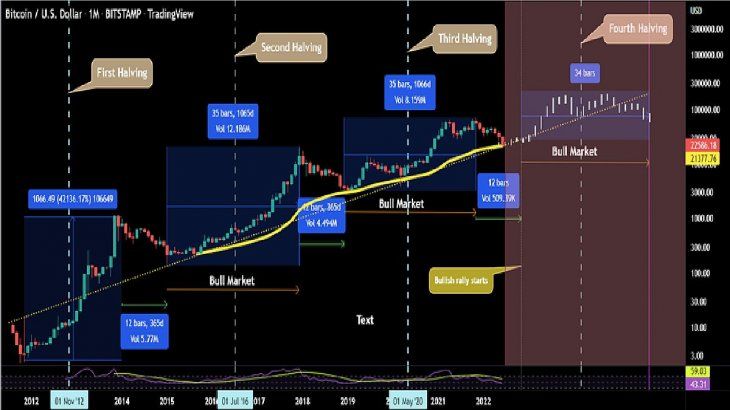How does the Fed rate hike affect the world of cryptocurrencies?
Such announcements typically have an effect on all risky financial assets, and crypto assets are no exception, already part of many investors’ investment portfolios as global adoption grows on a massive scale. However, these effects may be different while we speak of short, medium or long term.
The last few weeks have been important for the crypto ecosystem. Bitcoin has reached price levels not touched since 2020, reaching the value of ~$20,000. By having such a listing, the value of the market capitalization of the entire crypto ecosystem fell below a trillion dollars. Keep in mind that in November 2021 this figure reached 3 billion, a historic milestone for the industry.
bitcoin-dollar-cryptocurrencies
freepik.es
In order to estimate the path that Bitcoin may take in relation to its future price, various factors must be taken into account. First of all, you have to understand that Bitcoin is a cyclical currency. This means that within a given time range, several market cycles can occur. These can be bullish or bearish. Since November 2021, we have been in a bearish phase of it, having as a precedent the historical maximum of ~$69,000.
But what defines these market cycles? Why do they occur?
These are questions to which many theories and/or reasons can be found. One of them has to do particularly with the issuance of said currency, and how it slows down over time through a system called “halving”. The halving it is a process that periodically reduces by half the rewards for the creation of blocks in the cryptocurrency market, and with it results in a slowdown in Bitcoin issuance. Through the use of this system, the total emission would be reached in 2140, but more than 98% of the available Bitcoins will be mined by 2030.
These events of halving occur approximately every 4 years, the determining factor of whether or not it occurs is related to the number of blocks that are mined within the blockchain. So far throughout history there have been 3 halving. The first in 2012, the second in 2016 and the last in 2020 and it is estimated that the next one will be in 2024. In the last three instances, whenever a halving subsequently we had a bull run.
But what is this bull run due to? Why happens?
Said theory of the cyclical characteristic that the market has, driven by a halving of the issuance process, implies that the offer of rewards for mining each block is reduced and with a growing adoption of cryptoactives, a price increase occurs, and with it this leads to Bitcoin attracting more attention, thus capturing additional investors as the population becomes more informed about bitcoin, its properties and potential. So from the halving price increases, new demand is generated and the foundations for a new bull market are laid.
Bitcoin vs Dollar Graph.jpg

As a counterpart to this argument, there is much talk that since the moments of halving are already known in advance by more users. The effect that the next ones can have is not the same. But so far in all cases the same thing happened. Also on the other hand, it should be noted that the inner workings of Bitcoin are not fully known by most existing users, but are known in detail by a few.
So, taking into account the above, the results of interest rates in the United States may have an effect in the short term, since they have to do with the general sentiment of the average investor, which includes both traditional financial assets as well as crypto assets in your portfolio. But considering a fundamental perspective on the inner workings of Bitcoin, It should not affect in the long term as much as the market cycles that we have had over the years.
What can happen to the price of Bitcoin in the Short/Medium Term?
In the short term, it is estimated that the price of the largest cryptocurrency in the world could reach a value between 16,000 and 18,000 where there are important price supports for 2018 and 2021.in these areas are these levels that seen from a technical point of view indicate that it could rebound.
On the other hand, in the medium term it is estimated that said downward cycle will last until November 2022, but until that date the price of Bitcoin should gradually grow. Said prediction is based on the basis that the duration of the average bearish cycles to date was around 365 days, and at that time it would be a year since the beginning of the bearish cycle in which we currently find ourselves.
Crypto & Financial Analyst at NW Professional Traders.
Source: Ambito




